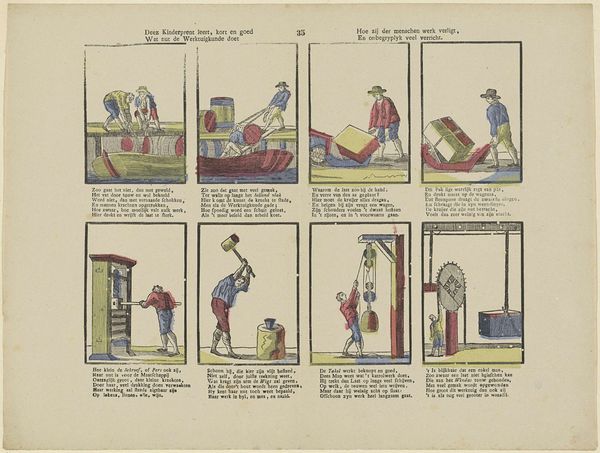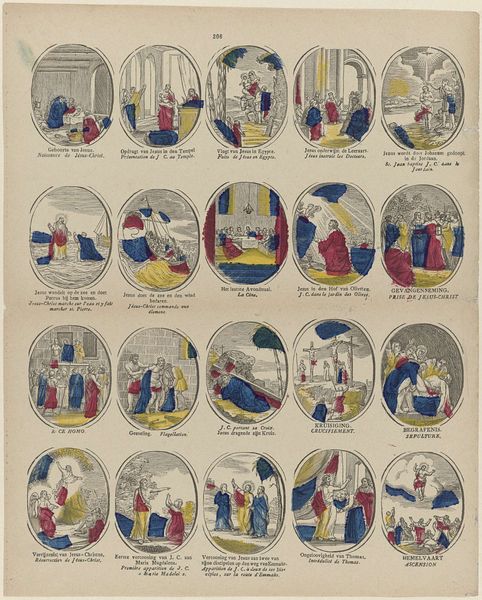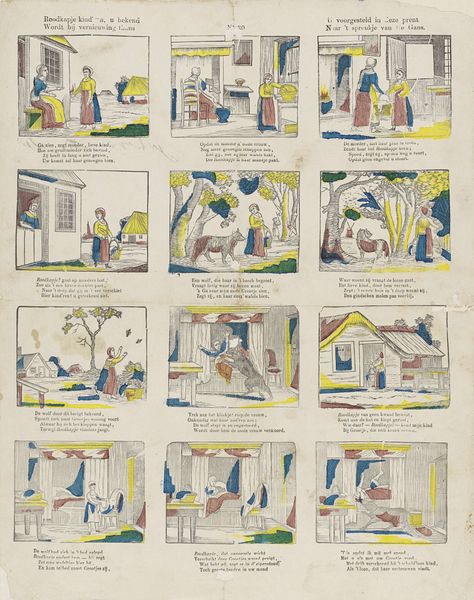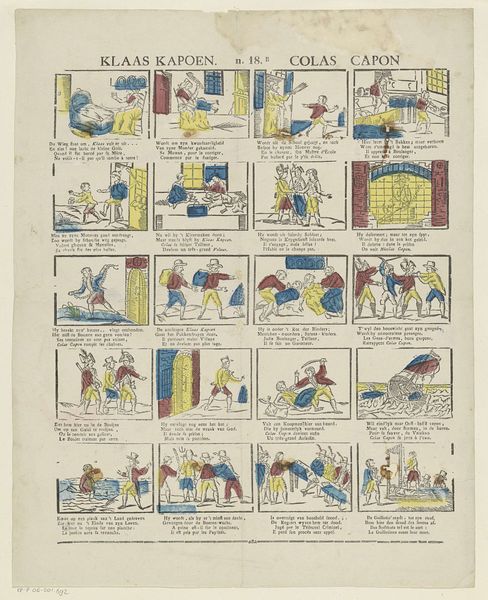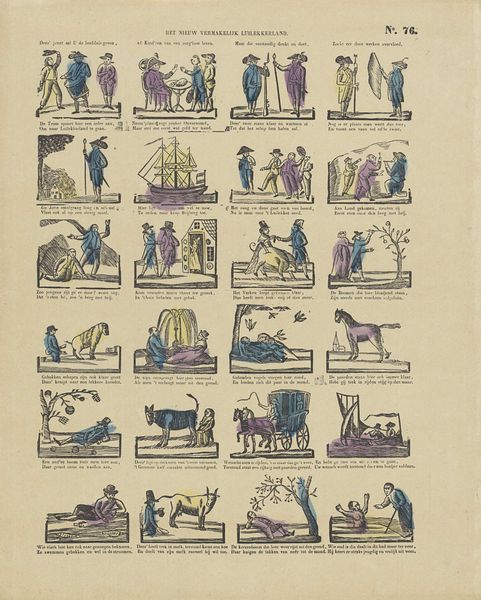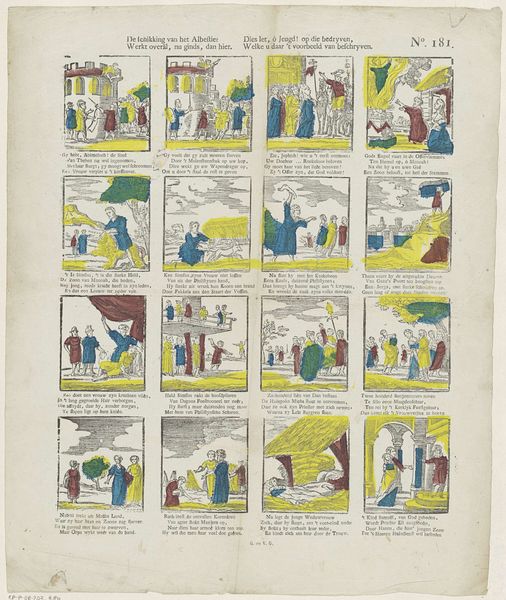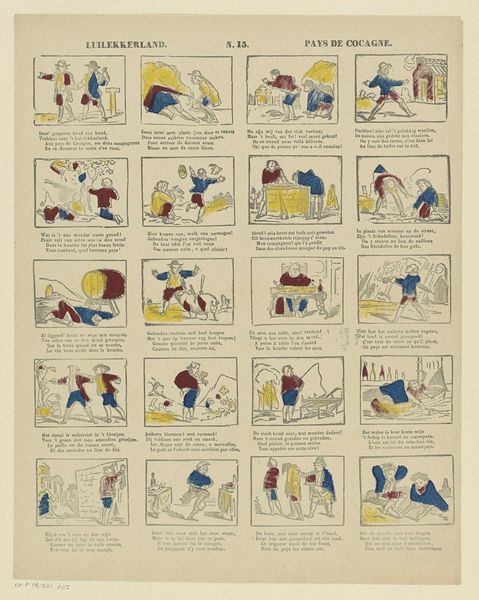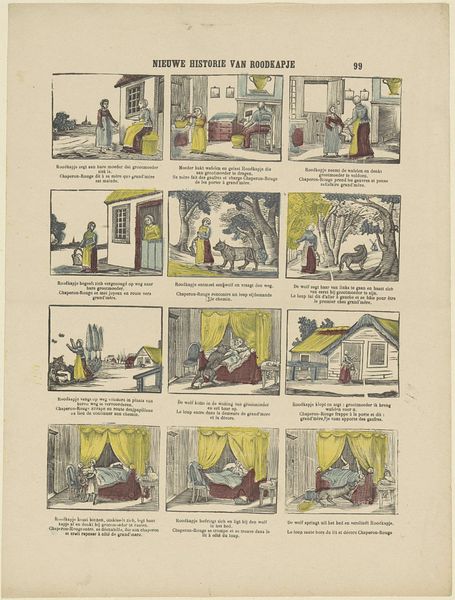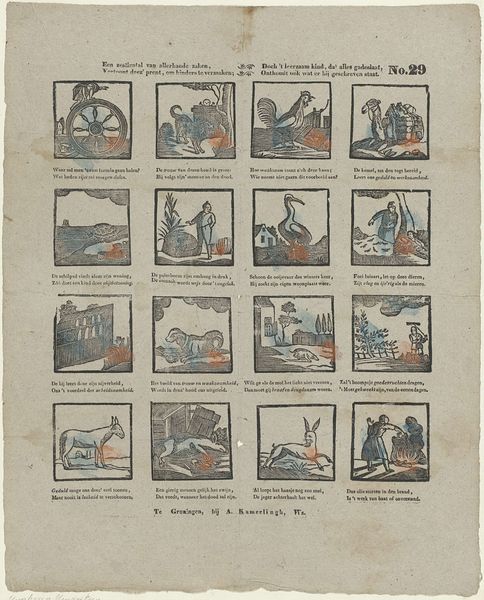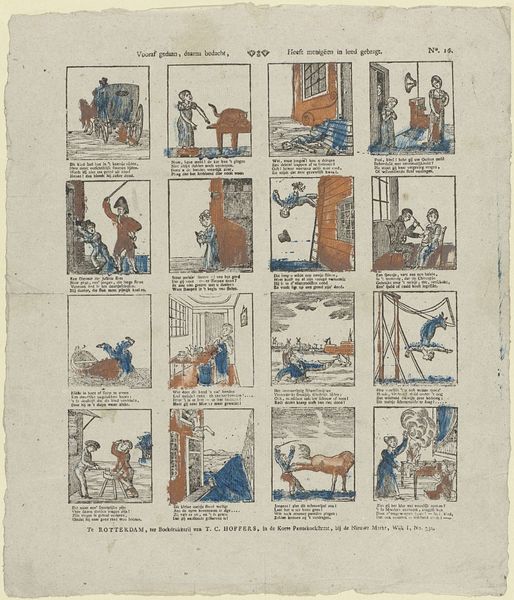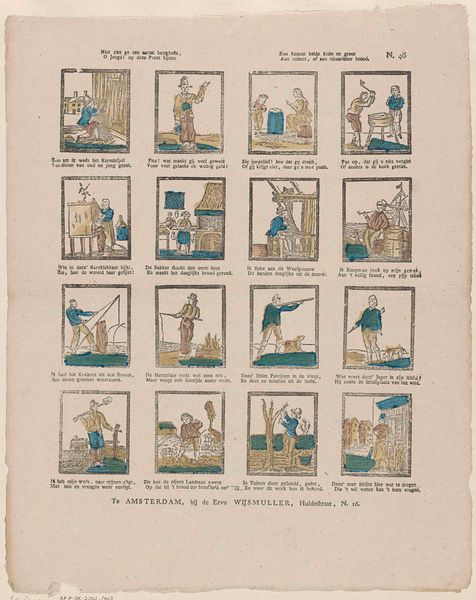
Als gy, myne kinderen uw' les hebt geleerd, / Dan wordt ge tot loon met deez' prenten vereerd 1848 - 1881
0:00
0:00
lutkiecranenburg
Rijksmuseum
graphic-art, lithograph, print
#
graphic-art
#
narrative-art
#
dutch-golden-age
#
lithograph
# print
#
folk-art
#
genre-painting
Dimensions: height 384 mm, width 315 mm
Copyright: Rijks Museum: Open Domain
Editor: Here we have "Als gy, myne kinderen uw' les hebt geleerd, / Dan wordt ge tot loon met deez' prenten vereerd," created sometime between 1848 and 1881 by Lutkie & Cranenburg. It's a lithograph, currently housed at the Rijksmuseum. I'm struck by the way it presents all these small scenes. What am I looking at here? How would you interpret the context around the making of such a print? Curator: Well, this piece, made with lithography, a printing technique that democratized image production, really speaks to the relationship between art, education, and reward within a specific socio-economic framework. Look at the mass production implied by the grid layout; each little scene would have been quickly reproduced, intended for wide distribution. It invites the question, though: what labor went into each? Who decided which scenes would offer rewards and reinforce moral lessons? Editor: So it's less about high art and more about accessible imagery and potentially reinforcing societal values, then? I initially saw it as something quite quaint. Curator: Precisely. We should challenge traditional notions of the "art object" here. Instead, let’s examine how this lithograph functioned as a commodity in 19th-century Dutch society. Consider the materials themselves: the paper, the inks, the stones used for lithography. Who controlled these resources, and how did that control influence the messages conveyed? This isn’t about aesthetic beauty, but the social and economic forces driving its creation and consumption. Editor: So, by understanding how it was made and circulated, we can better grasp its message and its impact at the time. That definitely reframes how I see it. Thanks. Curator: Exactly. Thinking about its production and consumption within a materialist framework offers invaluable insight into the past and even perhaps invites reflection on our current moment.
Comments
No comments
Be the first to comment and join the conversation on the ultimate creative platform.
